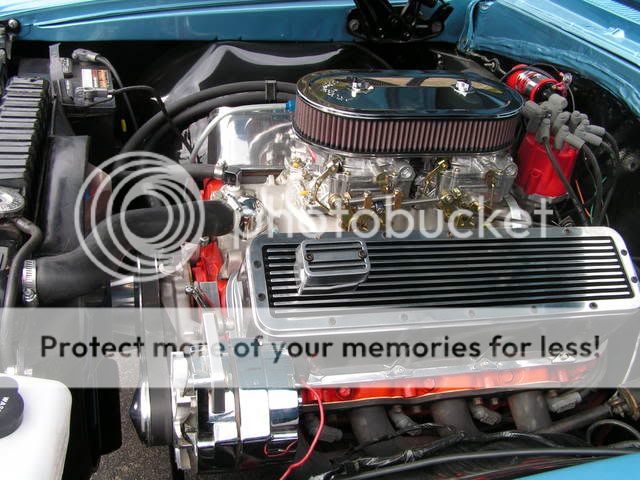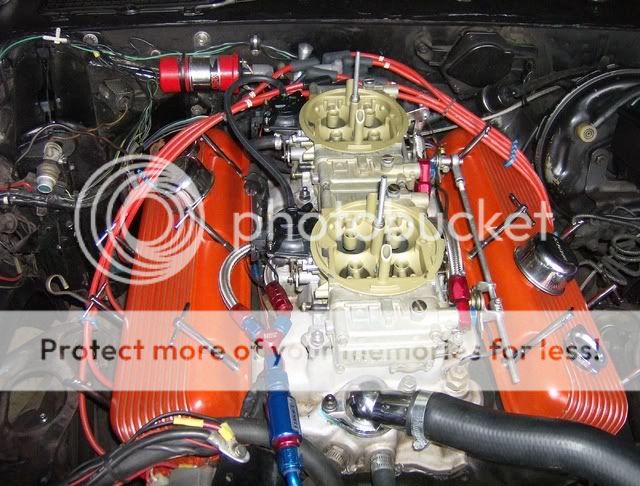

http://garage.grumpysperformance.co...hing-the-drive-train-to-the-engine-combo.741/
http://garage.grumpysperformance.co...electing-a-torque-converter-stall-speed.1715/
http://garage.grumpysperformance.co...late-gear-ratios-and-when-to-shift-calcs.555/
all it takes is a tiny bit of research and some math to calculate the ideal rear differential gearing, tires size etc. and transmission gear ratios, and you can certainly select the correct torque converter stall speed if you have a dyno graph of your engines power curve without much difficulty, an hour or so spent in reading and research will provide you with a great deal better performance from most cars.
and a couple days worth of research and doing some math on all of the power trains component parts will provide you with a wealth of info that can prevent you from making costly mistakes.
but this may help you
http://users.erols.com/srweiss/calcdchg.htm
http://www.chevyhiperformance.com/howto ... index.html
http://users.erols.com/srweiss/calccarb.htm
http://users.erols.com/srweiss/calcafhp.htm
http://victorylibrary.com/mopar/cam-tech-c.htm
http://www.rbracing-rsr.com/runnertorquecalc.html
http://www.moparmusclemagazine.com/...2_port_injected_cross_ram_manifold/index.html
http://www.engr.colostate.edu/~allan...a/effarea.html
http://www.newcovenant.com/speedcraf...runnerarea.htm
http://www.newcovenant.com/speedcrafter/toc.htm
http://victorylibrary.com/mopar/intake-tech-c.htm
http://www.geocities.com/MotorCity/T...92/vizard.html
http://www.bob2000.com/carb.htm
http://www.mortec.com/carbtip1.htm
http://www.rbracing-rsr.com/runnertorquecalc.html
http://www.centuryperformance.com/vacuum.asp
the question usually goes " what size carb do I need," or something similar,
4v carbs are rated at a flow rate determined with a vacume or pressure drop of 1.5" of mercury, your best power AT WIDE OPEN THROTTLE AT MAX RPMS will generally be found with a carb that lowers the presure drop or vacume to between 0.5" and 1.0" of vacume, not 1.5" at full throttle,more vacume at full throttle indicates a slight restriction to flow, now on a street car thats not going to be much if and problem, but on a race cars engine its a sign that your potentially giving away some potential power.
lets look at your comon 600cfm carb some of you guys use, a 0.5 inches of vacume it flows only about 350cfm, at 1.0" it flows about 500cfm, at 1.5" it flows about 600 cfm , rated like a two barrel at 3.0" of vacume it flows close to 780cfm, and if you stuck it on a 600 cubic inch big block spinning 6000rpm youll pull about 6" of vacume and it would flow about 1000cfm plus!
now remember youll try to stay in the .5" to 1.5" range at full throttle, to make good power.
now some of you might notice that the flow dropped NOTICABLY once the vacume dropped and dropping the vacume at wide open throttle tends to help power, provided the a/f ratio is kept near 12.7-13.0:1,AND the engine is set up to USE the flow available to it.
VOLUMETRIC EFFICIENCY
in theory a cylinder fills to 100% full, but the limited time the valves are open and the ports restrictive flow will only allow that to happen at a narrow rpm range
your engines torque curve on an rpm scale closely mirrors the engines efficincy at filling the cylinders, on that same scale, once the cam timing and port flow become a restriction power falls off because theres less fuel /air mix burnt per power stroke, the power tends to keep going up for alittle further in the rpm band simply because theres MORE ,thou slightly less effective power strokes per minute.
at 1000rpm theres 500 intake strokes per minute thats 8 per second times the intake valve opens and closes, at 6500rpm thats 54 times a second, not much time when you think about what needs to flow thru that port in the limited time....especially if you remember that of that 720 degrees in the cycle only about 240 degrees have any useful flow potential, so you just cut even that time by 2/3rds
some of you may have figgured out that to get the lower vacume or restriction, youll want a larger carb or perhaps two carbs, remember were trying to get that .5"-1.0" of vacume at full throttle, and that 600cfm carb is not going to flow 600cfm, at that vacume reading but between about 350-500cfm, so if you have an engine that can take full advantage of the flow it may, and usually does require a larger carb to make max power,that 383 might require an 800-850cfm carb or two 600 cfm carbs (since you double the venturie cross sectional area with two carbs the vacume reading is generally cut to about 1/2 what it was and the two 600 cfm carbs now flow about 350cfm each or 700cfm per pair) yet the carb size is just NOT all that critical,to making fairly decent (NOT MAXIMUM POWER) simply because as the vacume signal goes up, so does the carbs flow rate, and as the vacume signal strength goes down so does the flow
RESPONCE!
up till now we are talking only FULL THROTTLE POWER, but you operate under a wide range of rpms and loads, put that larger carb on a small engine and it makes good power at wide open throttle, but it also tends to have a weak vacume signal at off idle rpm ranges and it may run like crap! so a ballance must be accepted. smaller carbs are generally more responsive, but slightly more restrictive with thier smaller venturies.
http://www.carcraft.com/techarticles/0304_intake_manifolds_contrast/index.html
http://www.superchevy.com/technical...p_0612_big_block_tunnel_ram_intake/index.html
if you want to build something responsive for street/strip use, these smaller 4 barrel carbs below ,make tuning easier on a car used mostly on the street
http://www.holley.com/0-8007.asp
Last edited by a moderator:
